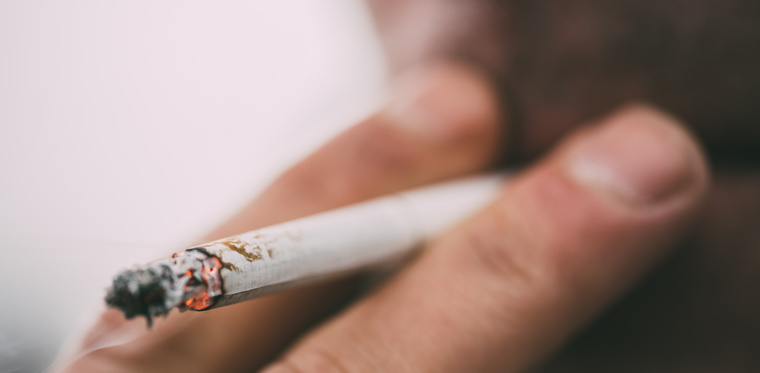
Article title: Chest Pain from Smoking Weed
The growing popularity of cannabis and its medicinal benefits has drawn most people's attention. Since cannabis is commonly used for medicinal purposes, most of the population see it as safer to use, unlike other commonly abused drugs, such as opioids.
What worries the cannabis users most are the related side effects. As expected, cannabis has several displeasing side effects. The brain is the most affected organ, and the health impairments range from mild to severe depending on age, underlying conditions, and degree of use. The brain functions that marijuana interferes with include coordination, reaction time, emotions, decision-making, memory, attention, and learning. Dry eyes, dizziness, and dry mouth are among the physical side effects one can experience from smoking weed.
According to most users, the medical and recreational benefits of smoking marijuana overrides its adverse effects on the respiratory system. But what should concern us most is the relationship between smoking weed and chest pains. Let's get to the bottom of this.
The Anatomy of the Chest and Reasons Why Smoking Cannabis Might Hurt It
To better understand why the chest pains after smoking cannabis, it's essential first to understand the anatomy of the chest. Chances are you have forgotten your anatomy knowledge from your school years. Worry not as we'll about to dive into a quick yet thorough refresher.
The chest cavity is the second largest hollow space in the human body after the abdominal cavity. It's also known as the thoracic cavity. The chest cavity is found just above the abdominal cavity, and the two are separated by the diaphragm, a muscular and membranous partition. The heart and lungs are the main organs present in the chest cavity. They're enclosed by the ribs and breastbone, which protect these vital organs from external trauma or damage.
Lungs, as the major organ of the respiratory system, facilitate breathing. Pleura is a protective membrane that covers the lungs. When air enters through the mouth or nose, it gets into the trachea (windpipe). The air gets into the lungs from the trachea by passing through the bronchi (two small tubes) and then further distributed by the bronchioles (smaller tubes). There are very tiny alveoli at each bronchiole, also known as air sacs. The air sacks facilitate the rapid exchange of oxygen and carbon dioxide in and out the bloodstream, respectively. Oxygen gets into the bloodstream through alveoli membranes, from where it's picked up by red blood cells and transported to the body's tissues and organs. Alveoli pick up carbon dioxide, and it's expelled through the bronchi and the trachea.
The heart is located in the middle of the chest between the lungs. Its main work is to pump blood through the cardiovascular system, which consists of arteries and veins into organs, tissues, and cells.
The non-oxygenated blood enters the heart through the vena cava, located in the right atrium. The non-oxygenated blood is pumped to the right ventricle from the right atrium. The pulmonary artery in the right ventricle carry blood to the lungs to receive oxygen. The pulmonary veins in left atrium carries the oxygenated blood from the lungs, which is then pumped to the left ventricle. The oxygenated blood is pumped to the aorta and to the rest of the body by the left ventricle (the strongest chamber). The vigorous contractions of the left ventricle create blood pressure.
The coronary arteries that run along the heart's surface provide oxygen-rich blood to the heart muscle. A nerve of web tissue that also runs through the heart governs contraction and relaxation by conducting complex signals. The pericardium encloses the heart and vessels, keeping it stable by facilitating its movement while separating it from the lungs.
This process helps deliver nutrients and oxygen to every cell while removing the waste that has been produced by the cells, including carbon dioxide. After a complete cycle, the blood goes back to the heart, and the same process is then repeated.
Possible Causes of Non-Marijuana Related Chest Pain
The non-marijuana-related chest pains can vary from minor problems such as emotional stress or heartburn to serious medical emergencies such as pulmonary embolism or heart attack.
It can be challenging to establish if chest pain is a sign of a serious health condition that requires immediate treatment or not, especially if one has never had chest pains before.
It's possible to establish whether one is suffering from a heart attack, pulmonary embolism, or other health conditions by evaluating the signs. The pain can be mild or severe for a heart attack, lasting for more than fifteen minutes. Although some people have warning signs some hours or days in advance, a heart attack can be sudden.
The other health condition that can cause chest pain is angina. It occurs when there is reduced blood flow to the heart muscle. Stable angina is predictable as follows a pattern, while unstable angina is sudden and may signify a future heart attack. You should contact your physician if your angina changes or gets worse. Aortic dissection, chest wall pain, indigestion, pericarditis, and pneumonia with pleurisy can also cause chest pain.
Regardless of the cause, you should seek medical attention to establish the cause of your chest pain. As a thumb rule, you should urgently contact your medical provider if you experience the following:
- Sudden chest pain
- Severe chest pain
- Chest pain spreading to the left arm, upper back, or jaw
- Occurrence of chest pain when you're exercising
- Chest pain is accompanied by sweating, nausea, shortness of breath, dizziness, or palpitations.
If your chest pain doesn't fit the above criteria, you should still be checked out, especially if there are pre-existing hereditary issues. If your chest pain is new, unexplained, or changing, you should also see a doctor.
Cannabis can cause chest pains in many different ways. As expected, smoking cannabis and other products cause adverse effects on the lungs. Still, marijuana causes heart problems too. Here is a deeper look at how weed can affect the heart.

How Smoking Weed May Affect the Heart
Scientists have discovered that people with established heart conditions develop chest pains quicker when smoking cannabis than they would when otherwise. This is mainly because of the effects of cannabinoids on the cardiovascular system, including making the heart pump harder, raising resting heart rate, and dilating blood vessels. Research has shown that the risk of heart attack is higher in the hours after smoking weed than it would normally be.
The three major effects of the psychoactive ingredient in cannabis, Tetrahydrocannabinol (THC), and other cannabinoids to the heart include:
- Cannabis arteritis: This is inflammation of arteries, damaged blood vessel walls, and reduced flow to the organs due to heavy use of cannabis.
- Platelet aggregation: Tiny blood cells such as platelets clump together and form clots that block blood vessels, thus reducing blood flow.
- Cannabis-induced vasospasm: This is the contraction of the muscular artery muscular wall making the artery narrow decreasing the amount of blood that can go through it.
Smoking cannabis causes low oxygen levels in the blood, and when the amount of oxygen reaching the heart muscles is reduced, adverse effects to those with heart diseases are seen.
A report posted in the Journal of Emergencies, Trauma, and Shock describes the cases of two men who had developed chest pains after smoking weed. Although neither of them had any other related factors for cardiovascular disease, they both had serious blood clots in one of the arteries.
One of the French Addictovigilance Network's reports showed that between 2006 and 2010, 1.8% of people with adverse effects of cannabis had several heart conditions. There were about 22 cardiac complications during this period, and 9 of them resulted in death. Almost half of the people who developed cardiac complications after smoking weed had a family history of heart disease.
Thus, we can say that marijuana can contribute to cardiac complications, especially if they're heart disease issues in the family.
Is Chest Pain from Smoking Weed a Real Thing?
It's very clear to the majority of the population that smoking has adverse effects on the lungs, whether from burning wood, marijuana, or tobacco. Cannabis may have worse effects on the lungs than tobacco. Weed contains many harmful chemicals and toxins that irritate the respiratory system, thus causing complications. Also, since the use of cannabis in some areas is illegal, the regulatory testing isn't vigorous, and vendors may compromise its quality without your knowledge. Aspergillus mold, which can grow on cannabis, is one of the most common contaminants present in marijuana. It causes lung infections when inhaled, which may lead to pneumonia or even death when left untreated.
Beyond the composition of the smoke, marijuana is smoked differently than tobacco. Most people inhale cannabis more deeply and hold the smoke for a longer period, and this causes it to have worse effects than smoking tobacco. From this, it's seen that a joint of weed can cause the damage caused by five cigarettes. Thus, smoking cannabis clearly damages the lung.
Cannabis smokers have an increased risk of contracting bronchitis due to the irritation and inflammation that the smoke causes to the cell linings of the large airways. Heavy weed smokers are even in a worse position as they're highly likely to contract severe lung conditions such as chronic obstructive pulmonary disease (COPD). On the other hand, the risk of getting emphysema is lower with marijuana than tobacco. At this moment, the relationship between cannabis and lung cancer is still unclear.
Collapsed lungs is another condition associated with smoking weed, especially among people under 45 years. Chest pains are also a possible condition that can arise from smoking cannabis due to coughing fits that could strain the intercostal muscles between the ribs.
Other Health Concerns of Smoking Weed
The most common negative effect of weed is anxiety. The anxiety level can range between mild and full-on panic attacks. The symptoms of a panic attack that one may experience include chest pain, clammy skin, difficulty breathing, and a sense of impending doom. These signs are easy to establish for people with regular panic attacks, but they might be frightening for first-timers.
Luckily, panic attacks usually disappear after a short time. Calming thoughts and breathing deeply can help you overcome panic attacks within minutes.
Marijuana affects short-term memory, and it can temporarily prevent the brain from learning new things or developing new memories. It also has long-term effects on dopamine which regulates the reward and pleasure centers of the brain. Dopamine also controls impulse and attention behavior.
Smoking marijuana heavily reduces bone density and may result in bone-related health problems, including osteoporosis.
The other challenge of smoking marijuana is the risk of addiction. Withdrawal is a real problem since discontinuing cannabis intake after prolonged use disrupts daily life through loss of appetite, insomnia, depression, hallucination, and anxiety.

Closing Remarks on Why Your Chest Might Hurt After Smoking Cannabis
Although smoking weed is considered safe, marijuana can cause adverse effects to the lung, heart, and other body organs. It can also cause anxiety and panic attacks. Cannabis effects on the lungs and heart can result in chest pains, which can be frightening, especially if it's happening for the first time.
If you suffer from chest pains after smoking weed, it's advisable to seek medical attention. Remember to be honest when discussing your condition with the doctor for an accurate diagnosis. You should disclose related information, including cannabis use and any family history of heart disease.
If you frequently experience chest pains after smoking weed, you should move to other options of consuming cannabis, such as edibles or topical creams. This will save you from lung, heart, and anxiety issues. Always contact your healthcare provider anytime you experience health issues after smoking weed.


.png)